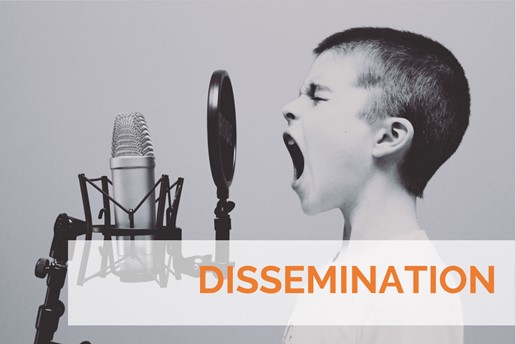Dissemination and communication are considered to be of great importance and highly valued by the European Commission in H2020 projects. This is due that, together with the exploitation of your project, communication and dissemination are measures that will help you maximise the impacts expected from your project.
However, we often see the two terms being used interchangeably and we thought to write about the difference, so you hit it off right from the proposal development stage and so you achieve an excellent communication and dissemination strategies that help you increase your impact!

It’s the public disclosure of the results to audiences that may be interested in using them.
This means that you transfer the knowledge and results that you have produced along your project to the ones that can best make use of it (e.g. research peers, industry, other commercial actors, professional organisations, policymakers, etc.).
Since you will want to spread your results as far as possible to maximise your impact, the dissemination process must be planned since the beginning of the project, usually through a dissemination plan.
The dissemination plan will define the why, what, how, when, to whom and where the disseminating of results will take place. In your plan, you want to have a strategy for each of your target audiences as the language and means you will utilize for each stakeholder might need to vary.
For example, if your interest is the general public, you can make available the information through a website where anyone can find it. Whereas if you are interested in a more targeted audience, you might want to make the information more attractive and with the language, those relevant stakeholders use by using means more frequented by them (e.g. researchers through scientific journals).

It’s a two-way dialogue with your target audience(s) and beyond.
The aim is to reach out to society as a whole and in particular to some specific audiences while demonstrating how EU funding contributes to tackling societal challenges. By going beyond the project's own community, you have to communicate your research in a way that is understood by non-specialists, e.g. the media and the public.
Since communication is about promoting your project, its topic and the challenges and problems it is trying to tackle to multiple audiences, it might be useful to create a communication plan in a strategic and effective manner, allowing your audiences to get more invested not only in the project but also in the issue it is trying to solve.
An example of project communication is the project newsletter. This is a “tool” that contains information about the project itself and is sent directly to people who have stated their interest in the project’s work (subscribers). You can transform hard scientific data into engaging language that explains its relevance to society.
SUMMARIZING:
If you want to know more about maximizing the impact session of your proposal, join us for the Proposal Development webinars.




